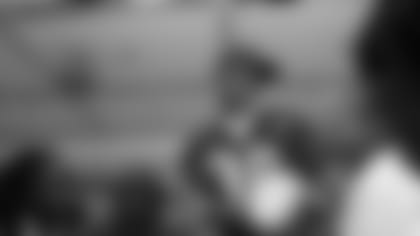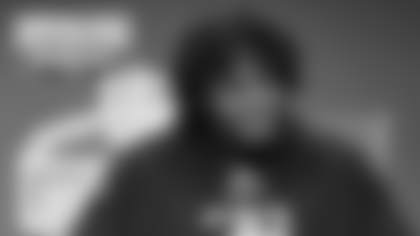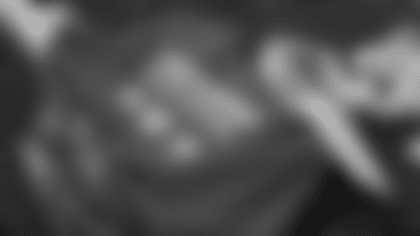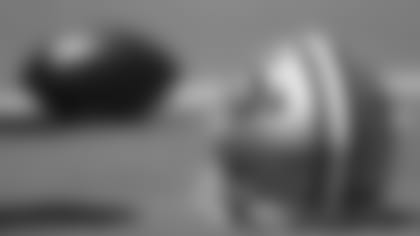Black History Month is a time for us to remember the importance of the people and events in African-American history.
In honor of this special time the 49ers helped celebrate the rich culture and history of Africa by hosting nearly 200 San Francisco students at the Museum of African Diaspora in San Francisco throughout the month of February.
In addition to hosting the children during Black History Month, the San Francisco 49ers joined the MoAD's list of corporate members as a silver level sponsor donating $2,500 to the Museum and 49ers cornerback Donald Strickland joined the first group from the Bayview/Hunters Point YMCA to share in the experience.
In the hopes of changing people's perceptions about the way they see Africa, the Museum of African Diaspora, or MoAD, exposes visitors to the art, culture and history of the African Diaspora in an educational and interactive way.
"We see such horrible images of Africa on our nightly news, what's going on in Kenya after the elections, certainly what's happening in Darfur, and we get terrible negative misconceptions from those news reports," said Paula Ramsey, Director of Development for the MoAD. "This museum and this exhibition are important because they dispel those misconceptions. It is a modern continent and they are keeping up with the times and they have adopted communication as we know it in the western world and made it very much their own."
The Museum's newest exhibit Africa.dot.com: Drums 2 Digital explains just that.
The exhibition explores the changing landscape of communication and connectivity in Africa today through art and technology. In contrast to classical African art exhibitions, Africa.dot.com focuses on representing Africa as part of the modern world, with cultures that have navigated into new media alongside the global community.
The children, who came from the Bayview/Hunters Point YMCA, Bret Harte Elementary School and KIPP San Francisco Bay Academy, experienced things they never knew about African American heritage.
"We learned about the instruments they use, because back then they didn't have a lot of cell phones and they had to use drums to communicate," said Erica, who participates in the Bayview/Hunters Point after school services. "Once they got over here to the U.S. people took their drums away because they found out that they were communicating with them. Then we took out our phones and we listened to how Africans have cell phones these days, but before they didn't. We also looked at drums and I saw this really big drum and I couldn't believe they used it because it looked like they couldn't carry it. I haven't been here before but it was fun and it was exciting."
It wasn't just exciting for the youngsters either.
"I felt it was very important to come, especially growing up in the Bayview, to help kids learn where they came from," said Strickland, 49ers cornerback and Bayview/Hunters Point native. "Our heritage is very important and I just wanted to be a part of sharing that with kids."
Strickland joined the children in the hands-on portion of the exhibit where they played with African instruments and had the opportunity to learn a little bit about the pro athlete.
"It's so important that for these young people, who are so often dreamers, to see there is someone locally who came from the same neighborhoods and the same streets that they live and play in and that is now part of the National Football League, part of the 49ers," said Sidney Griffin, Director of the 49ers Community Relations Department. "Donald was thrilled to be able to come back here specifically with the Bayview/Hunters Point group and go tour the exhibit and go through the same type of educational process that the kids are going through."
Strickland learned a few things from the exhibit as well.
"I really like the way MOAD is structured. It's very innovative and interactive. It gives different variations of how to learn about our ancestry and I think that is a key point of learning – the technology we have to interact with," he said. "I definitely learned about Haiti and the fact that slaves were used in order to generate wealth. There's a lot more for me to learn about my history so this is an excellent exhibit to come to and learn not only about Africa, but about other parts of the world as well."
As each visitor enters the MoAD they are faced with a huge mirror reflecting yourself and the question, "When did you first discover that you were African?"
"By that we mean that the first bones of our species were found in Eastern Africa so we all come from the same place," said Ramsey. "This is a very inclusive museum and it's about all of us. It's about our history and how we celebrate where we started, where we moved to, the transformation that took place and how we adapted. It's a place like no other in the world and it's a must-see."
Hopefully this experience has opened up a new generation to all that the MoAD has to offer, not only during this time, but year-round. .
To learn more about the Museum of African Diaspora, visit www.moadsf.org.






